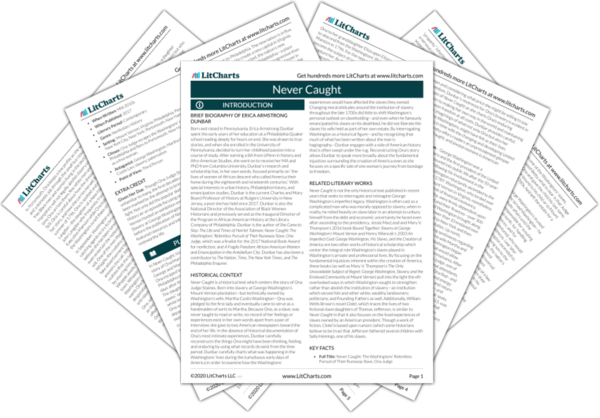As Dunbar quickly summarizes the final years of Ona’s life, she focuses not on the tragedy that marred her later years but on the hope, light, and self-understanding Ona was able to find even as she endured unthinkable circumstances. Despite having received no “mental or moral instruction,” Ona is remarkably able to educate herself and to seek solace in religion. And Ona was at last able to share her story in her own words—an act that allowed her to rebel even further against the Washingtons and the ways in which they forever altered the course of her life.
